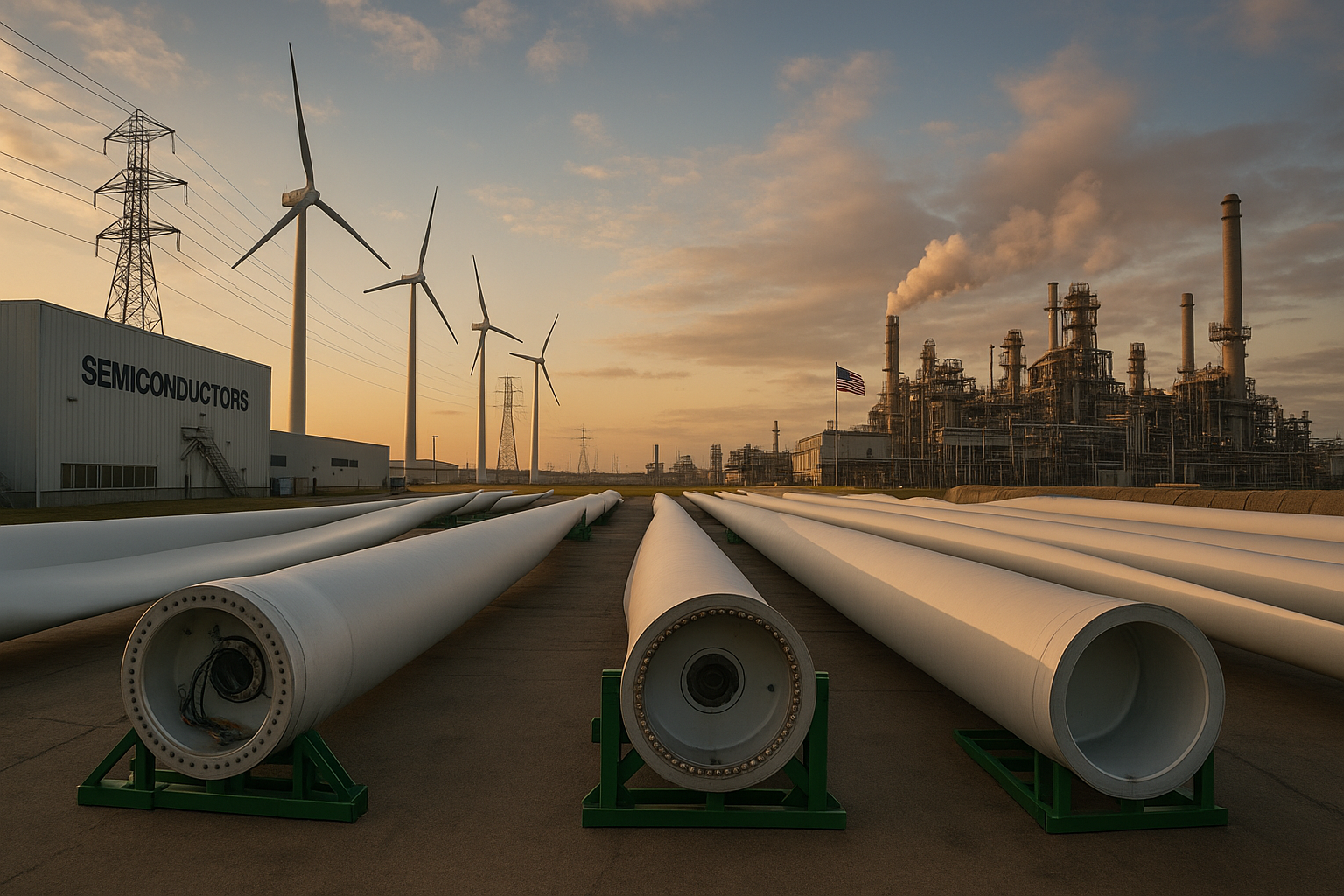From Green Goals to Geopolitics: IMF Charts the New Age of Global Industrial Policy
The IMF’s 2025 study shows that since 2020, industrial policy has shifted from competitiveness and climate goals to national security and supply chain resilience, driven by geopolitical tensions. Using AI-based analysis, it finds a surge in subsidies and tit-for-tat state interventions reshaping global trade and economic strategy.

A new IMF working paper, "Industrial Policy Since the Great Financial Crisis", authored by Simon Evenett and researchers from the International Monetary Fund (IMF), the University of St. Gallen, and the Global Trade Alert (GTA), offers a sweeping analysis of how governments have revived and redefined industrial policy since 2009. Drawing on data from the New Industrial Policy Observatory (NIPO), the study tracks 34,248 policy interventions across 75 countries from 2009 to 2023. The findings show that 85 percent of these measures distorted trade in favor of domestic firms, with China, the European Union, and the United States alone responsible for over half. The report highlights that state intervention has evolved from short-term crisis relief to long-term strategic governance, focusing on building technological autonomy, energy security, and geopolitical resilience.
Pandemic to Permanent: 2020 as a Turning Point
The authors identify late 2019 to early 2020 as the pivotal moment when industrial policy surged beyond its traditional scope. What began as emergency pandemic support soon transformed into a structural policy shift. The COVID-19 crisis exposed fragile global supply chains, while the U.S.–China trade conflict and Russia's invasion of Ukraine reinforced the urgency of self-reliance. Before 2020, competitiveness and climate goals dominated industrial measures, reflecting the "green recovery" ethos of the post-2008 era. After 2020, new motives, such as supply chain resilience, national security, and derisking from geopolitical rivals, rose to prominence. Governments now see industrial policy not only as an economic instrument but as a means to protect sovereignty and shape global technological trajectories.
Subsidies, Sectors, and Strategic Shifts
The IMF study finds that subsidies have become the dominant tool of modern industrial policy. While advanced economies favor state loans, localized public procurement, and trade finance, emerging markets rely more on direct grants, tax incentives, and import controls. Both groups increasingly converge around subsidies as their instrument of choice. The most supported sectors are dual-use technologies, advanced manufacturing, critical minerals, and upstream materials like steel and aluminum, industries viewed as vital for both defense and clean-energy transitions. Surprisingly, the report shows that many "green" interventions fund energy-intensive sectors seeking cleaner production methods rather than pure renewable technologies. This blend of industrial and environmental motives illustrates how states are redefining what counts as "green industrial policy."
Geopolitics and the Rise of Tit-for-Tat Subsidies
The paper's econometric analysis reveals a striking reversal in the political economy of state intervention. Before 2020, countries avoided subsidizing sectors that depended on imports from geopolitical rivals. After 2020, they deliberately targeted those same vulnerable sectors to reduce foreign reliance. The research also uncovers a new tit-for-tat pattern: governments increasingly respond to foreign subsidies with their own, escalating competitive subsidy races in semiconductors, electric vehicles, and clean energy. Industrial policies have also grown more concentrated, new measures frequently reinforce existing ones in the same sectors, deepening structural favoritism. Advanced economies lead in this cumulative support pattern, while emerging economies focus more on policies shaped by geopolitical exposure. Another major shift concerns sector selection. Previously, states supported industries with established comparative advantages; now, they prioritize nascent or uncompetitive sectors to build future capabilities, signaling a shift from preservation to strategic ambition.
Technology, Data, and a Warning for the Future
One of the paper's most innovative aspects lies in its use of artificial intelligence. The IMF and its partners employed large language models, such as the transformer-based RoBERTa, to analyze thousands of policy descriptions and identify their underlying motives. This approach enabled unprecedented scale and accuracy, distinguishing between genuine climate policies and those framed as green but primarily driven by competitiveness. The model achieved over 80% precision and recall, marking a significant leap forward in policy analytics. The findings reveal that industrial policy has become nearly universal: by 2023, three-quarters of all major economies had introduced trade-distorting measures, up from just over half in 2009. Yet only about 16 percent of nations, those with deep fiscal resources and large domestic markets, can sustain such policies without straining their budgets or distorting markets. The IMF warns that without coordination, this global subsidy race could fragment trade, heighten inefficiencies, and harden geopolitical divides.
The paper captures a world where industrial policy has moved from the economic periphery to the geopolitical core. Governments are no longer content to merely regulate markets, they are actively reshaping them to serve national and strategic goals. The post-2020 surge in interventionism marks not just a policy trend but a structural transformation in global economic governance. The IMF's analysis stands as both a detailed chronicle of this shift and a cautionary call: the new industrial age may define the next phase of globalization, but it risks fracturing it as well.
- FIRST PUBLISHED IN:
- Devdiscourse
ALSO READ
-
IMFA Expands with Strategic Acquisition of Tata Steel's Ferro Chrome Plant
-
Kenya Negotiates New IMF Deal Amid Debt Dilemma
-
IMFA's Ambitious Expansion: A Boon for India's Ferro-Chrome Industry
-
Kenya Engages with IMF for New Financial Pathways Amid Securitisation Debate
-
IMF Study Merges Machine Learning with Monetary Policy to Strengthen Risk Frameworks









